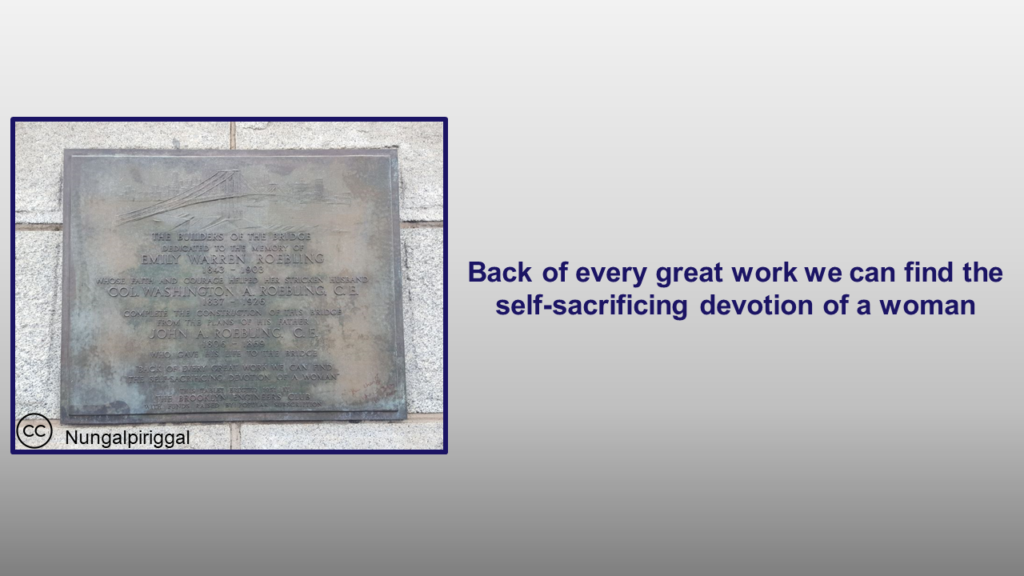Introduction
The Brooklyn Bridge was opened on the 24th of May 1883 and the first person to cross the bridge in a carriage was Emily Warren Roebling.
She was the daughter-in-law of the designer John A Roebling, and the wife of the chief engineer Washington Roebling.
Why?
John Roebling died in July 1869 from tetanus and was replaced as chief engineer by his son Washington.
As the work progressed caissons1 were sunk into the river to allow work on the foundations of the bridge towers.
As chief engineer Washington would regularly visit the caissons often remaining for some time. In 1870 when supervising the fighting of a fire in one of the caissons he collapsed.
He recovered, but by 1872 he was incapacitated and often confined to bed.
Emily Roebling
Emily who was well educated and had a sound grasp of engineering stepped in.
She became the conduit between her husband and all the stake holders.
She led a strong campaign to ensure that Washington was retained as the chief engineer.
For the next decade she demonstrated her ability and determination and ensured that Team Roebling successfully completed one of most audacious engineering projects of the 19th century.
The “Roebling plaque” on the bridge testifies to her devotion.

Conclusion
This is a very brief post to honour and exceptional woman, but there is much more to tell.
The History PM will be providing more details of the Brooklyn Bridge, and Emily’s role, in later posts.
In 1883 Emily Roebling convincingly demonstrated that women can be engineers and project managers.
The fact that it took society a century to fully realize it leaves one wondering, just who is the smarter gender?
NOTES
1A caisson is large chamber that is sunk to the riverbed and pressurized to prevent the ingress of river water to the work area. The riverbed is then excavated until the caisson is resting on a solid base. Concrete or brickwork is then constructed to form the permanent foundation.
Unfortunately, the problems with working in pressurized spaces was not understood, and workers would routinely work their shift and then immediately exit the air lock into normal atmospheric pressure.
Workers would become incapacitated of even die from what was called Caisson Sickness. (We now call it the bends)
